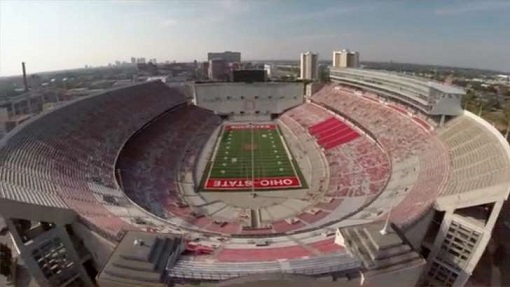Every so often, an unsuspecting spectator may be hit by a fly ball or may even catch a football that misses the net during the kick for an extra point. And perhaps the obnoxious guy sitting behind you will spill his soda on your back or the child four seats over will request that you get up and down 95 times so he can go to the bathroom or concession stand. These are all small nuisances when you start to consider the growing trend — and resulting danger — of civilian drones at stadiums.
As technological advances have reduced both the size and cost of remote-control aircraft, more people have access to purchase and operate them. But at what cost?
At this time, the Federal Aviation Administration (FAA) has opened several investigations for instances in which drones have violated airspace restrictions while flying over large athletic events.

“It’s an absolute safety concern,” said Marc Lovicott, a campus police spokesman at the University of Wisconsin-Madison, where a quadcopter buzzed over the student section in the 80,000-seat Camp Randall Stadium during a recent game against Illinois. “You never know what might be carried along with something like that.”
One side effect of the decreasing prices of drones is the rise in untrained amateurs who are ready to fly their new toys and see what they can do. Unfortunately, in large, crowded areas, these small aircraft can be really dangerous.
For many years, the only drone accidents we heard about were those involved in military operations. But accident investigation documents are now showing that civilian drone incidents are on the rise. In fact, the FAA says pilots have reported 15 close calls with rogue drones near airports in the past two years alone. And other public agencies have reported 23 accidents involving authorized drones since 2009.
Late last month, the FAA issued a public notice that updated an established ban on airplane flights over open-air stadiums with 30,000 or more spectators by extending the prohibition to now include “unmanned aircraft and remote controlled aircraft.” As for penalties, the notice stated that violators could be fined and imprisoned for up to a year, marking the first time the FAA has stated that civilian drone pilots could wind up behind bars.
It remains to be seen how stringent the FAA will be about these new airspace guidelines, but one thing is for sure… fans need to watch out for rogue drones at popular sporting events, because they won’t be as blatantly obvious as the giant Goodyear blimp!
Via MSN and Washington Post
Advertisement
Learn more about Electronic Products Magazine





